Last week I was teaching a class in a room with a pair of fire doors that had some issues. Anyone care to list some of them?
While we were discussing the lack of positive-latching on these doors, someone mentioned that 20-minute doors didn’t need positive-latching at one point in time. I had just received a copy of the 1961 edition of NFPA 80 that I bought on eBay for $4.99, so I looked for the 1961 requirements for 20-minute doors. Guess what?? 20-minute doors are not even mentioned in the 1961 edition!
I looked at a few committee reports online for the various editions, and 20-minute doors (and 30-minute doors) were included in the 1973 edition of the standard. I can’t tell for sure whether that was the first edition where they were mentioned, and I do not see an exception for latching on 20-minute doors. If you’re reading this and you remember non-latching 20-minute doors, let me know!
If you’re conducting a fire door inspection on an older building and you need an early edition of the standard, they are all available for sale as pdfs on the NFPA website. My copy of the 1961 edition is tiny – only 4 3/4″ x 7 1/4″ and 57 pages, and much of the text and many of the drawings are eerily similar to the current standard. The 1961 standard even required fire door inspection! “A continual inspection and maintenance program is necessary…” (see below).
You need to login or register to bookmark/favorite this content.

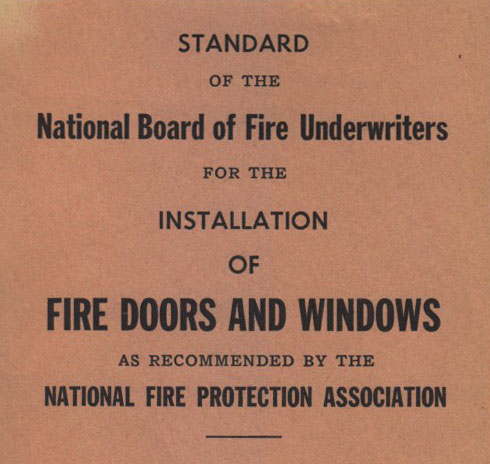
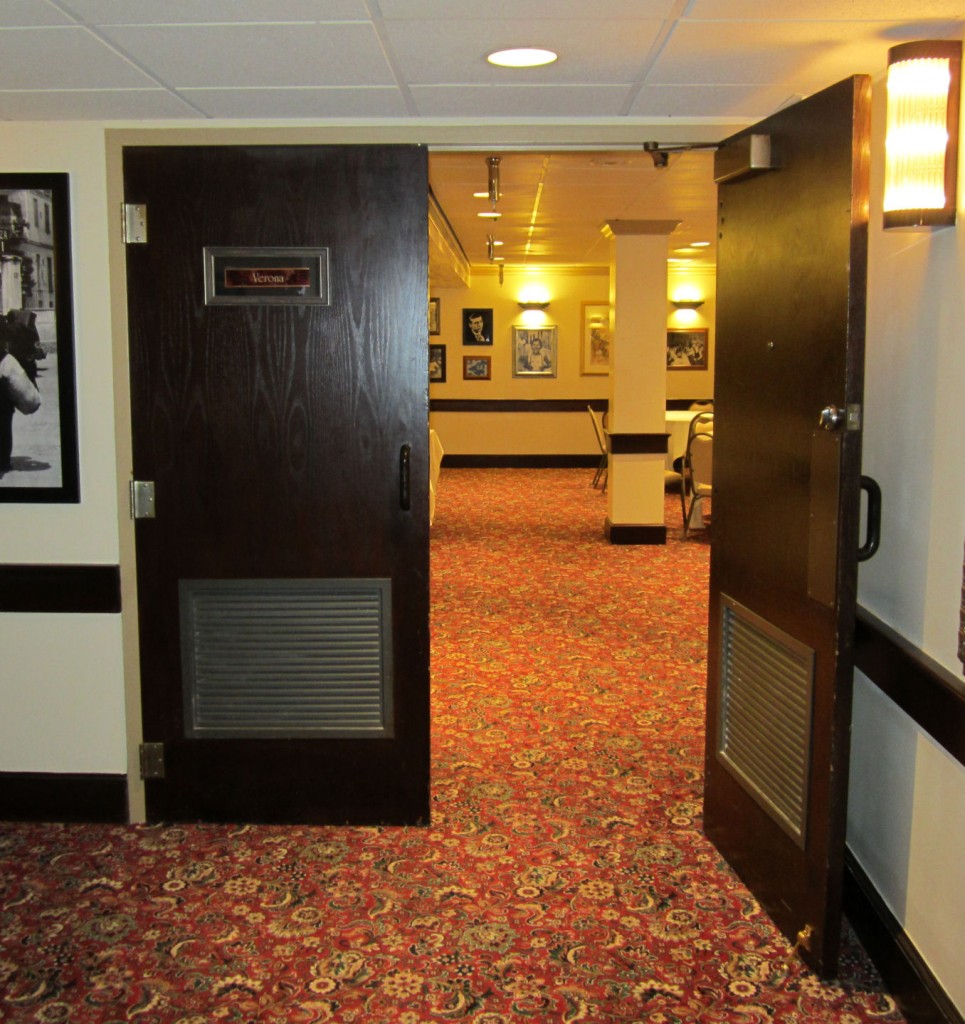
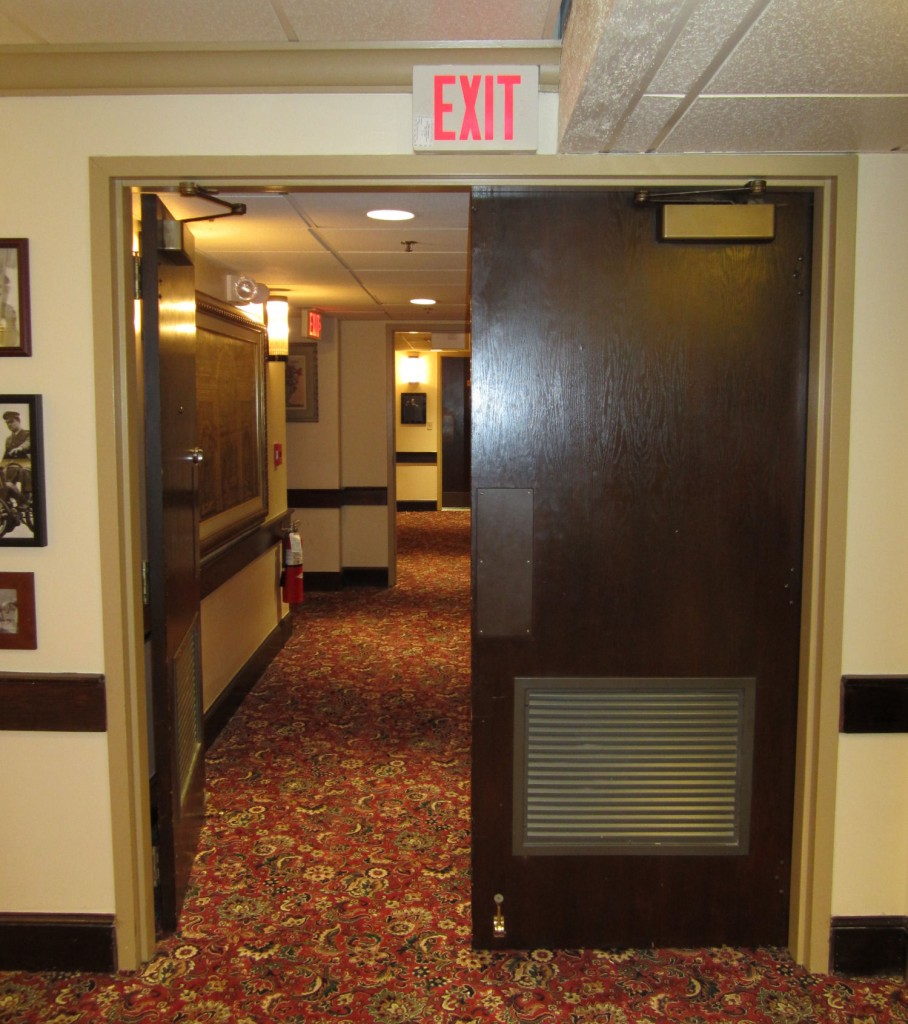
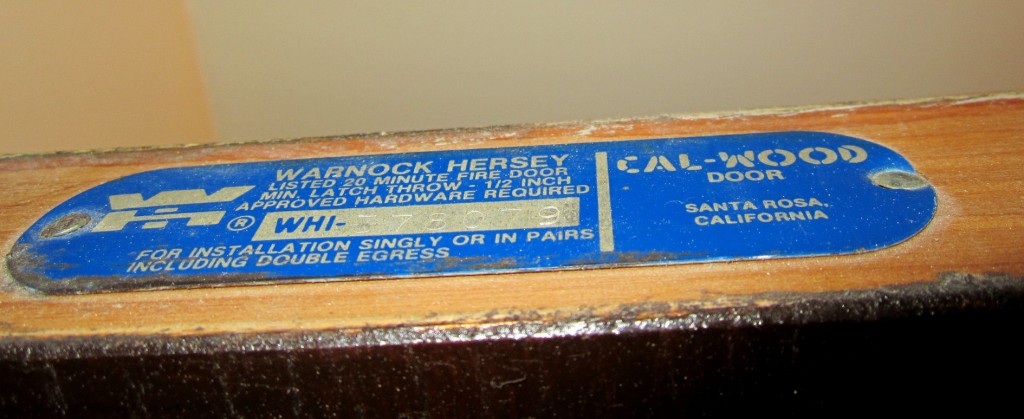
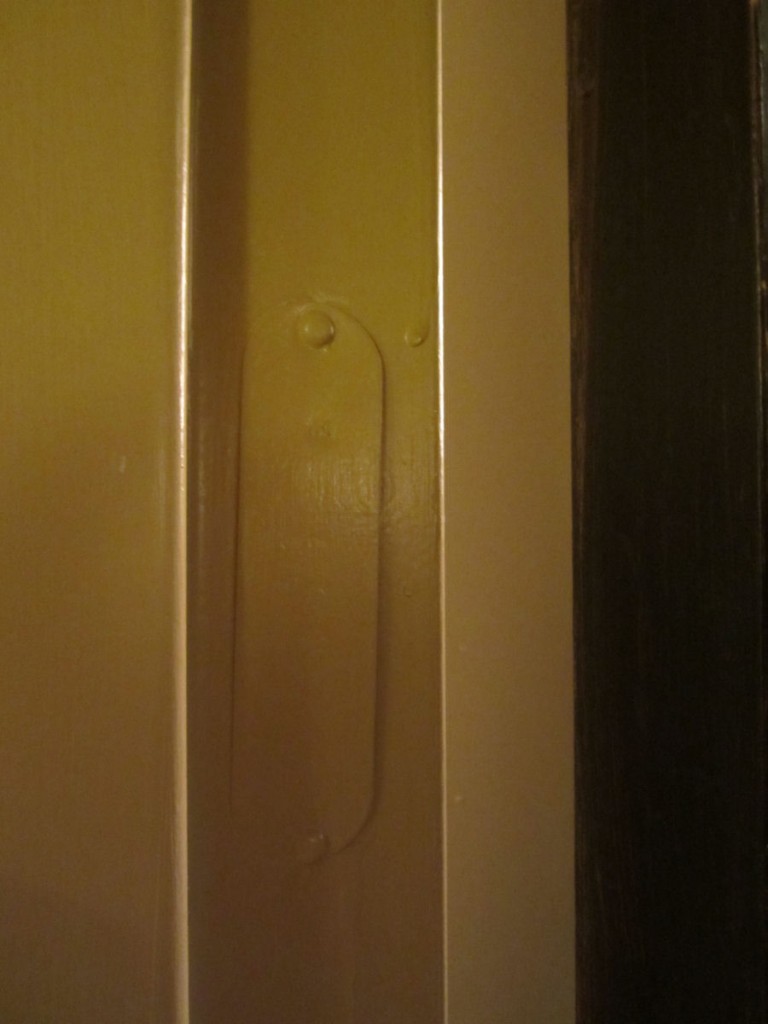

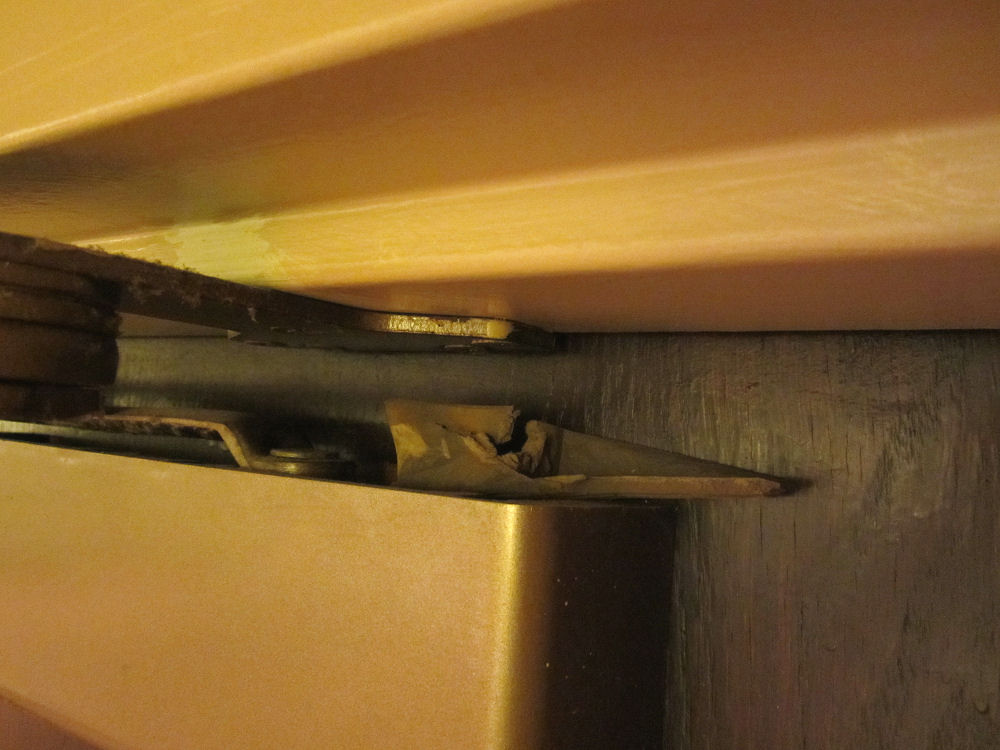

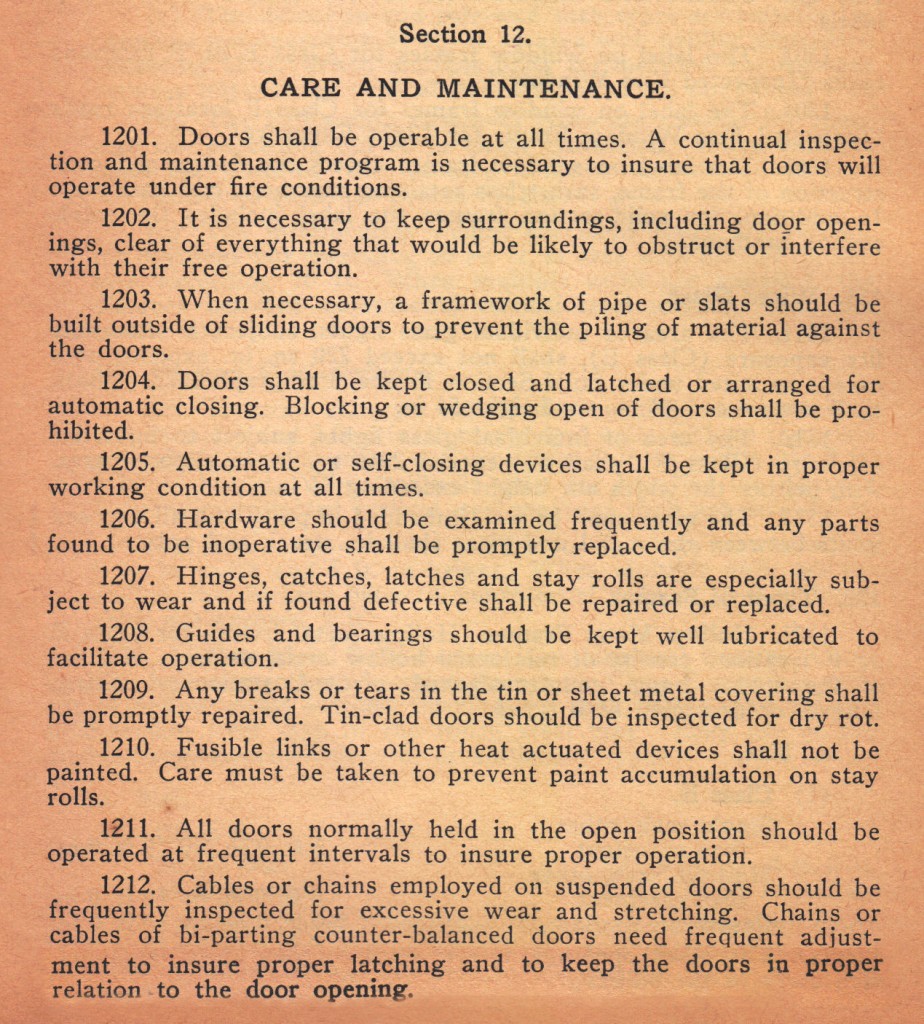
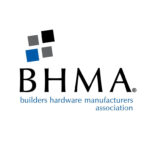
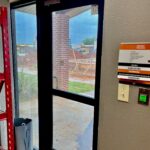


Dead bolt , no exit device(s) , maybe the louvers are too big or no fusible link
No latching, louvers, deadlock, disrepair, painted label, hideous carpet…surely there can’t be a Grandfather clause for fire doors.
Question – did wood fire doors used to be required to have half surface through bolted hinges like these doors? I’m doing a job now where it’s in the spec and the engineer is insisting on it. He’s also requesting a lot of other stupid stuff in that spec like the locks must be US26D, NOT 626.
Oh – I forgot the kick down stops that replaced the wedge.
Let’s see: louvers in the door, manual floor stops (which prevent the door from closing), non-embossed label painted over, dead bolt lock, no latching
I hope that those louvers are fusible link. Otherwise they should not be on fire doors. Also, according to my information, you cannot have a vision lite in a door with a louver when it is labeled.
Push Pull, Deadbolt, Louvers, Kick Downs…. You name it… this one has it.
Ahhh the good old days when you could hold a nfpa standard with two fingers
See:
Damaged door
Flow through grill
Maybe damaged closer
Kick door holders
Hinge problem???
Have not done a hospital in awhile, but do the patient doors have to latch!? Not in the office
Cross-corridor smoke barrier doors (20 minute rated, or 1.75″ solid core wood) still do not need to latch in a healthcare occupancy.
what I can see,
no panic,
no mullion
(are they allowed on double fire doors?)
hinges are bolted through the surface,
louvers are not allowed, as smoke can go right thru and defeat the purpose of the fire door.
rubber or wood wedges are NOT ALLOWED to be used on fire doors,
only hold opens allowed are fusible links or electronic magnets that realease with alarm or heat.
damage to the wood of the door (at top corner where a slide bolt may been installed at one point in time) cracks in the wood could also cause heat, fumes and smoke to enter the room and door cannot properly seal the room off from the fire side.
Cda: closer(LCN4041/4040 with EDA arm) looks fine to me, that thing on top of it is the wedge, a common storage place for a door wedge, on the “short end” of the closer body in the cover (out of the way of the arm when it’s moving)
only possible problem I can see on this closer is the “elbow” joint of its arm is in need of tightening up.
-Jess the door closer doctor
The doors are a disaster! Good choice in closers though! NFP80 requires swinging doors with builders hardware to do three things.1 swing freely 2 close completely and 3 latch securely.
NFPA 80 stardards are usually not retroactive, but nfpa does contain requirements that apply to existing fire door assemblies regardless of when they were installed.
Section 5.2.4 nfpa lists items that must be verified during inspection. #8 on the list Latching hardware operates and secures the door when it is in the closed position.
One might argue that #,it kind of implies if its there it has to work. But even cosidering that I would defer to the three things that NFPA says a fire door assembly has to do #3 is latch securely
We still have one pair of non-latching, wood, 20 min doors in our main hospital building that was built in 1975. There were many more, but the others have been upgraded over the years on various renovation projects.
Our remaining pair have no louvers, but do have push plates and pull handles.
I forgot to add:
To answer cda, patient room doors do have to latch.
Roller latches had been acceptable up to the mid 80s or so, but ever since, real latches are required.
Still, no closers are required, because closing and latching the doors is part of the nursing staff’s patient safety fire/emergency protocol.
There are some strange rules for healthcare.
Lots of things wrong most have been previously mentioned. But notice the sprinkler head in the corridor. Sprinkled buildings typically don’t need 20 min doors – the 1 hour corridor requirement is waived. Judging by the hinges these doors have been relocated from a different location (with their) 20 min label still intact.
I’m not sick but I’m not well. I’m totally excited about your 1961 NFPA. What a treasure! I am on the look out, not to be out done or my own copy. I also remember when Weyerhauser bought Cal Wood. There is something about this Buisness that has me. I have likened it to the old Eagles song Hotel California; you can check out any time you like but you can never leave. Thanks Lori,
I guess the first question to ask is, do these doors require a label? If not should the labels be removed?
I have shipped lots of labeled doors in the past for locations where no fire label is required.
Tag say’s it all 1/2″ latch throw